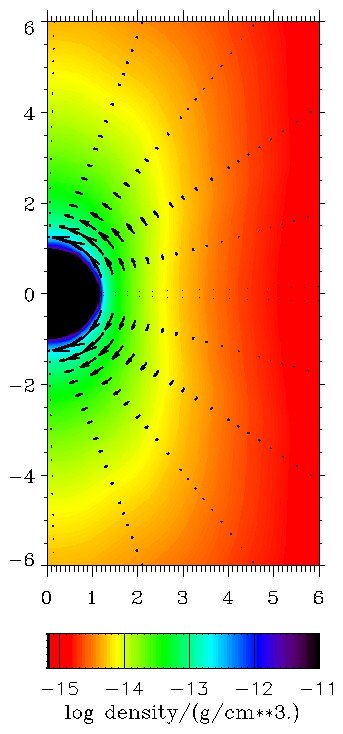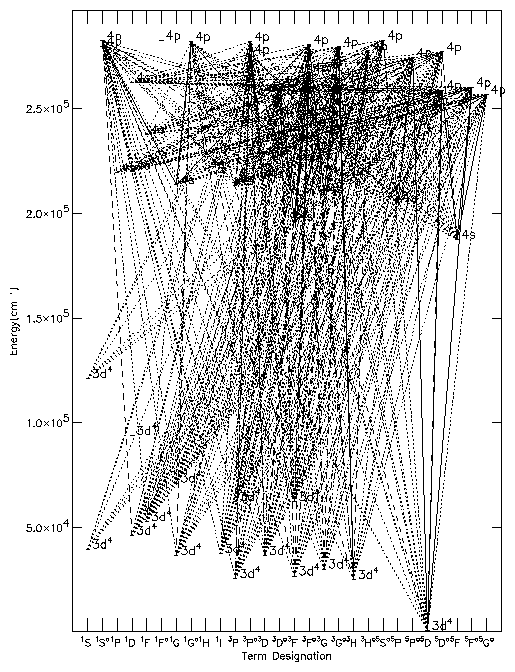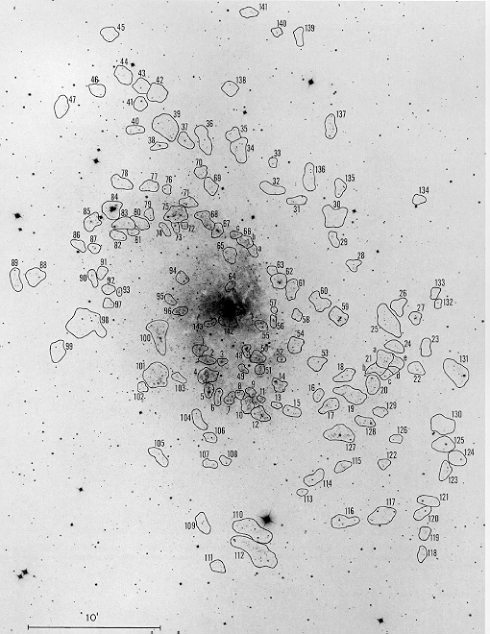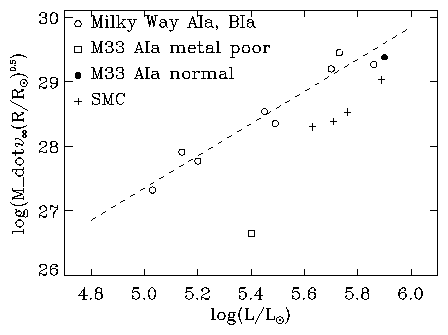
Joachim Puls und Adalbert Pauldrach
Universitätssternwarte München
Basic outline for the impatient. Winds from hot stars (here a numerical simulation of the density distribution of a rapidly rotating wind) are driven by radiative line acceleration in thousands of metal lines close to flux maximum.

As an example for the multitude of driving lines, we show here the Grotrian diagram of the most important levels in FeV. Solid, dashed and dotted line-style corresponds to strong, intermediate and low oscillator-strength of the indicated radiative transition. Note the large number of low-lying meta-stable levels in iron (-like) ions.

Observations and diagnostics of the winds from hot stars,
performed in our own Milky way and in external galaxies (the
Magellanic Clouds, M31, M33 (shown below, figure from
Humphreys & Sandage, 1980, ApJS 44, 319, identification of
143 associations)) have indicated a tight relationship between
the momentum rate of the wind (multiplied with the square-root
of the stellar radius) and the luminosity of the star, called
the Wind momentum - Luminosity Relation.

Since the winds are driven by radiative acceleration in metal lines, the stellar metal abundance affects the WLR. Presently, our group and collaborators are accumulating and analyzing the spectra of mostly supergiants in a variety of Galaxies in order to calibrate this WLR. An example for the (present) relation for A- and early B-supergiants is given below, as well as its metallicity dependence. Crosses indicate the relation for SMC objects (1/5 to 1/10 solar metallicity) and the square corresponds to one extremely metal poor star in the outskirts of M33.

After the calibration phase will have been finished, the WLR can be used as a new and independent primary distance indicator, allowing for the measurement of extragalactic distances out to Virgo and Fornax, thus helping to further constrain the Hubble-Constant.
In the following, we will outline the basic theoretical and diagnostical tools accumulated over the last years and illuminate the importance of stellar winds and their application in the astrophysical context. To a major part, this introduction follows a review given by R.-R. Kudritzki and J. Puls in Annual Reviews of Astronomy and Astrophysics (2000).